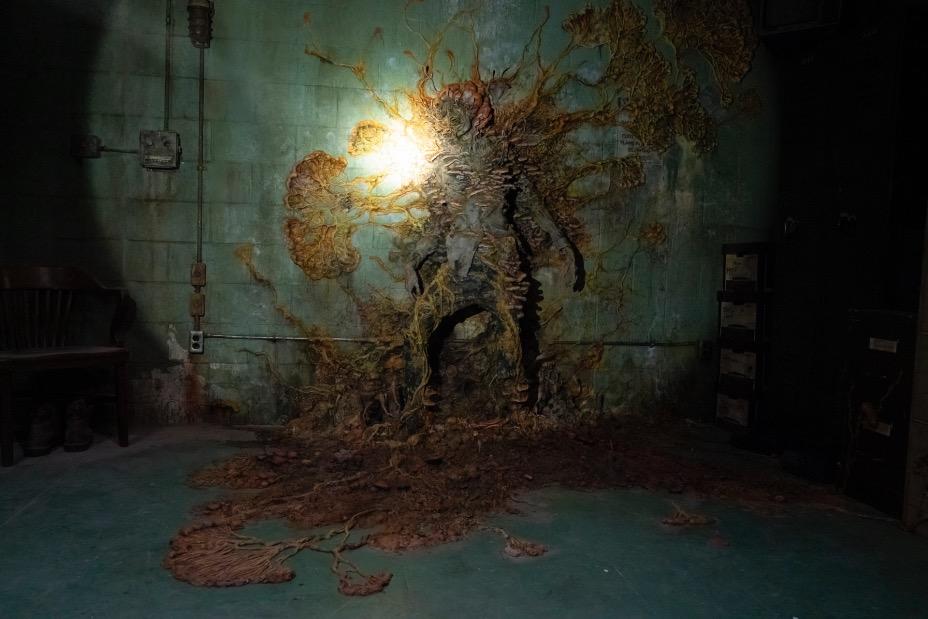The Last of Us Infection, Explained
Warning: this story contains spoilers for Sunday's The Last of Us, "When You're Lost in the Darkness." Set in 2023, HBO's adaptation of The Last of Us takes place 20 years after a fungal pandemic has destroyed modern civilization: what the video game calls the Cordyceps brain infection. Inspired by real-life science, the show's Cordyceps fungus threat is explained in a prologue set against the backdrop of a talk show in 1968. 35 years later, in September 2003, the CBI outbreak causes the spread of the zombie-like "Infected": Cordyceps fungus-infected humans who mutate into different strains and stages of Infected, including "Runners," "Stalkers," "Clickers," "Shamblers," and "Bloaters."
In 1968, epidemiologists Dr. Schoenheiss (Christopher Heyerdahl) and Dr. Neuman (John Hannah) weigh the potential of a viral pandemic. Schoenheiss is concerned an airborne virus could spread across the globe in a matter of weeks, and "the whole world becomes sick all at once." Neuman counters, "Mankind has been at war with the virus from the start. Sometimes, millions of people die, as in an actual war. But in the end, we always win."
What Is the Infection in The Last of Us?
While microorganisms pose a threat to humanity, it's neither bacteria nor viruses that concern Neuman: it's fungus. Neuman explains that there are some fungi who seek not to kill — but to control. The psychedelic drug LSD comes from ergot, a fungus, as does psilocybin, a key substance in mind-altering psychedelic mushrooms.
"Viruses can make us ill, but fungi can alter our very minds. There's a fungus that infects insects. Gets inside an ant, for example, travels through its circulatory system to the ant's brain, and then floods it with hallucinogens, thus bending the ant's mind to its will," Neuman explains. "The fungus starts to direct the ant's behavior, telling it where to go, what to do, like a puppeteer with a marionette. And it gets worse. The fungus needs food to live, so it begins to devour its host from within, replacing the ant's flesh with its own, but it doesn't let its victim die."
Instead, the fungus "keeps its puppet alive by preventing decomposition."
Dr. Schoenheiss argues that "fungal infection of this kind is real, but not in humans." Neuman notes that fungi can't survive if its host's internal temperature is over 94 degrees. As of 1968, there are no reasons for fungi to evolve to be able to withstand higher temperatures.
Should that change, Neuman posits, global warming could accelerate evolution.
"One gene mutates and an ascomycete, candida, ergot, cordyceps, aspergillus, any one of them could become capable of burrowing into our brains and taking control," Neuman warns. "Not of millions of us, but billions of us. Billions of puppets with poisoned minds permanently fixed on one unifying goal: to spread the infection to every last human alive by any means necessary."
Worse: there are no treatments. No preventatives. No cures. "They don't exist. It's not even possible to make them," Neuman tells a studio audience transfixed on his lesson, almost like zombies. "So if that happens? We lose."

The Last of Us Fungus: Game vs. HBO Show
In The Last of Us video game, the infection spreads through host bites and airborne Cordyceps spores that prompt post-apocalyptic survivors to wear gas masks in hostile environments. In HBO's The Last of Us, the threat is not airborne spores, but infection-spreading tendrils.
Inspired by unused concept art for the 2013 video game, the Venus Flytrap-like design is a change from the spores players are familiar with in the PlayStation version of The Last of Us.

"Obviously, there are some big things that we know we're keeping, of course, but then there are challenges from the game to the show that had to be considered," series co-creator Craig Mazin explained to ComicBook. "For instance, little things like the spores. In the game, there are these where you encounter spores and you need to put a gas mask on. In the world that we're creating, if we put spores in the air, it would be pretty clear that they would spread around everywhere and everybody would have to wear a mask all the time and probably everybody would be completely infected by that point."
Mazin continued, "So, we challenged ourselves to come up with an interesting new way for the fungus to spread, but mostly I think we just connected with the soul and spirit of the game. [The Last of Us game director and series co-creator Neil Druckmann], as the creator of the game, and me, as a fan of the game, we were caretakers on behalf of all the fans, but also on behalf of all the people who haven't played the game who need a television experience that is holistic and connected to itself and doesn't feel like you need to play a game to understand."
New episodes of The Last of Us premiere Sundays on HBO and HBO Max. Follow for more The Last of Us on ComicBook.